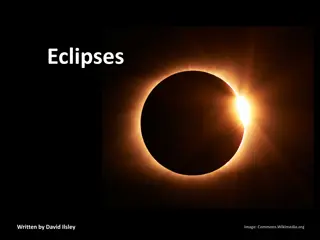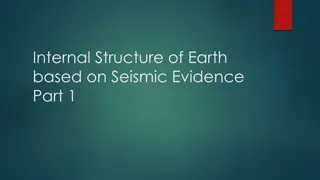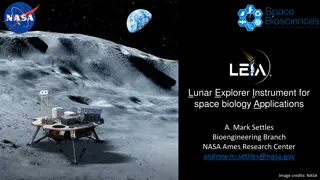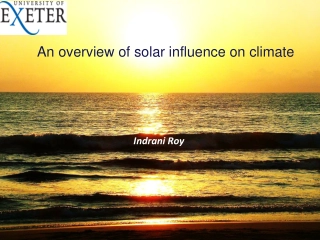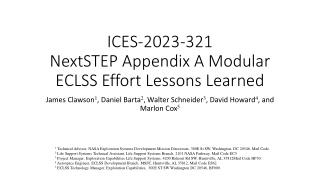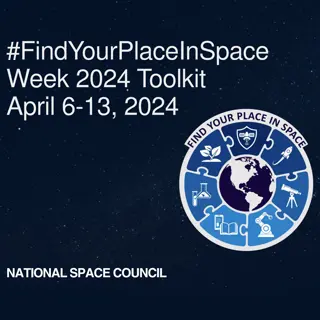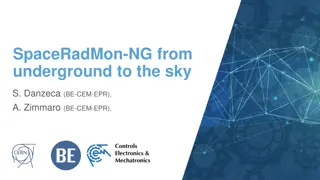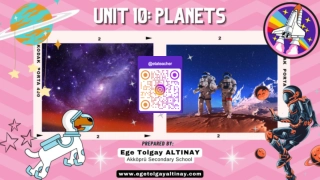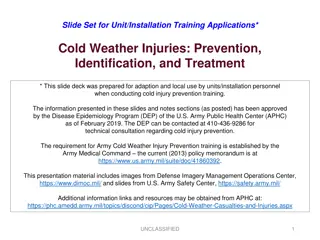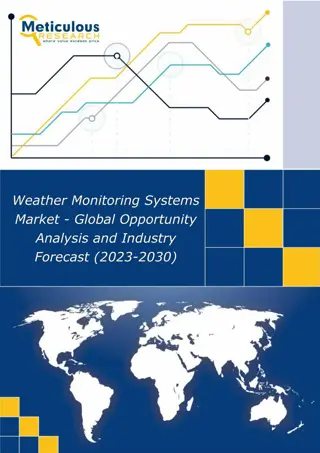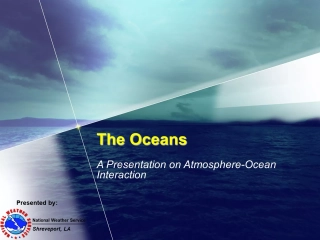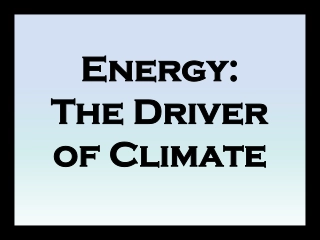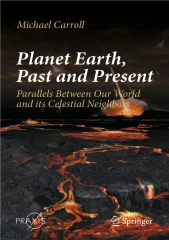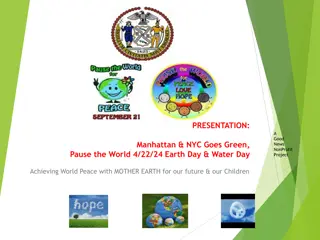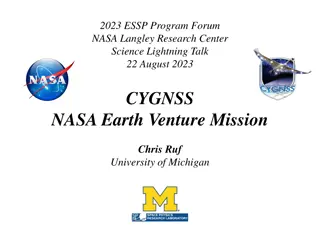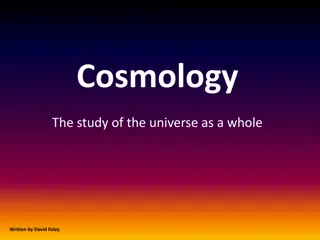Space Weather: The Sun-Earth Connection
Explore the intricate relationship between the Sun and Earth, as space weather phenomena such as solar flares and sunspots impact our daily lives. Discover how disruptions in communication systems, satellite navigation, and power grids can occur due to solar activity, highlighting the importance of understanding space weather for both technological and natural phenomena.
Space Weather: The Sun-Earth Connection
PowerPoint presentation about 'Space Weather: The Sun-Earth Connection'. This presentation describes the topic on Explore the intricate relationship between the Sun and Earth, as space weather phenomena such as solar flares and sunspots impact our daily lives. Discover how disruptions in communication systems, satellite navigation, and power grids can occur due to solar activity, highlighting the importance of understanding space weather for both technological and natural phenomena.. Download this presentation absolutely free.
Presentation Transcript
Space Weather: The Sun-Earth Connection 1
A massive blackout leaves millions of people without power 2
Communications are disrupted between the ground and satellites, aircrafts and ships. 3
GPS signals GPS signals are disrupted and magnetic compasses start pointing to a different location. 4
The aurorae are being spotted as far south as Florida! 5
What could be causing this? Earthquakes? Tornados? Hurricanes? Alien Invasion? 6
Its the Sun! 7
Inside the Sun Sunspots 8
What Makes Sunspots? Magnetic field lines (invisible) Sunspots Sun s surface 9
The Visible Sun Looking at the Sun in visible light reveals dark spots on its surface. These magnetic Sunspots are connected to the mysterious events just described. 10
The Sun in H-alpha In this specific color of red light we can see more details of the Sun s magnetic activity. 11
The Ultraviolet Sun From space, we can observe the Sun in ultraviolet (UV) light and see hot gas trapped in magnetic fields on the Sun. 12
The Magnetic Sun Ultraviolet images of the Sun reveal loops of hot ionized gas trapped in magnetic fields above sunspots. 14
The Different Parts of the Sun Photosphere: Sun s visible surface 15
The Different Parts of the Sun Photosphere: Sun s visible surface Chromosphere: Just above the Photosphere 16
The Different Parts of the Sun Photosphere: Sun s visible surface Chromosphere: Just above the Photosphere Corona: The Sun s outer atmosphere 17 The Corona extends far out into the Solar System, in fact we live in it!
Solar Storms Solar flares are explosions in the atmosphere of the Sun. They release energy that is stored in magnetic fields. 18
Solar Storms Coronal Mass Ejections (CMEs) occur when large- scale magnetic fields break throwing enormous amounts of matter into space. 19
Solar Storms and Earth Solar Storms and Earth These large storms are sometimes directed at Earth. It takes a few days for the material to arrive. 20
Solar Storms and Earth Solar Storms and Earth When a CME crashes into Earth s protective magnetic field it can excite atoms in our atmosphere. 21
Solar Storms can cause beautiful displays of the aurora 22
Solar Storms can cause massive power outages 23
Solar Storms can disrupt communications between the ground, satellites, and transportation Solar Storms 24
Solar Storms can disrupt GPS signals. Magnetic compasses won t necessarily point north. 25
The Suns Magnetic Field 26
The Solar Cycle Number of Sunspots Time 27 ~11 Years
NASA NASA s Heliophysics Missions s Heliophysics Missions 28
What is the Sun? The Sun is a Star, but seen close-up. The Sun is giant ball of very hot, mostly ionized hydrogen gas that shines under its own power.
What is the Sun? The Sun IS NOT an average, yellow star.
The Sun is White The Sun produces all the colors of the rainbow in roughly equal amounts, which is white light. If the Sun were yellow, then white T-shirts would look yellow in the mid-day sunshine. When you observe the Sun safely, by projecting its image through a pinhole camera or a telescope, you see that is white. Don t stare directly at the Sun! The UV radiation can damage your eyes.
The Sun is Above Average Most stars in the Universe are small, cool, low-mass dwarfs. The Sun is larger, hotter, and more massive than these. There are stars that are much larger, very hot, and many times more massive than the Sun. But these stars are quite rare compared to the Sun or the low-mass stars. The Sun is also not median, mid-range, or most frequent (mode) in the measures of size, temperature, brightness, or mass.
Size and Distance of the Sun The Sun is 109 times the diameter of Earth Over 1,000,000 Earths could fit inside the Sun. Earth The Sun is 150 million kilometers away from Earth. Moo n It takes light 8 minutes to travel to Earth from the Sun. This distance is defined as 1 Astronomical Unit (AU)
The Spectrum of Light Visible light is a tiny fraction of the Electromagnetic Spectrum Gamma rays--billions of waves per inch Radio waves--up to miles-long wavelengths High Energy Waves Low Energy Waves
Magnetosphere: Magnetosphere: The magnetic field surrounding Earth The magnetic field surrounding Earth Interaction with the Solar Wind compresses Earth s magnetosphere on the dayside and elongates it on the night-side making a magnetotail.
Magnetosphere: Magnetosphere: The magnetic field surrounding Earth The magnetic field surrounding Earth Most solar wind particles are deflected around Earth s Magnetosphere. Sliced view 3-D rendering Two small magnetospheric funnels (cusps) are open to solar particles.


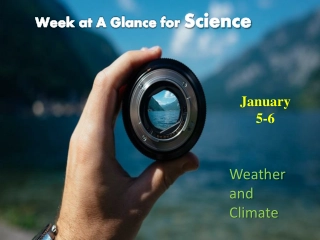
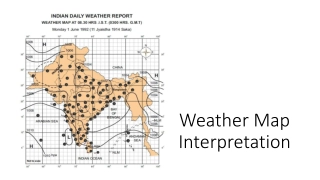

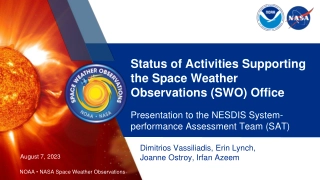

![[PDF⚡READ❤ONLINE] Solar Surveyors: Observing the Sun from Space (Springer Praxis](/thumb/21536/pdf-read-online-solar-surveyors-observing-the-sun-from-space-springer-praxis.jpg)
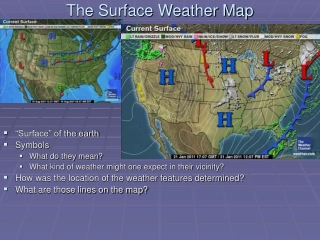

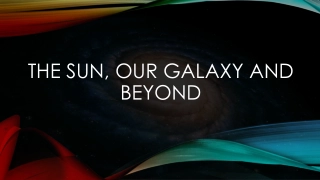
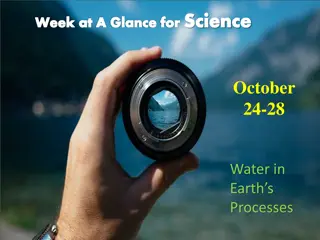

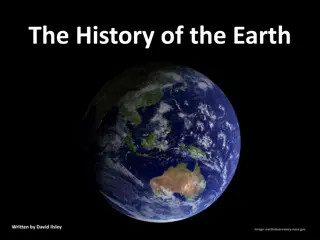
![Read⚡ebook✔[PDF] Linking the Space Shuttle and Space Stations: Early Docking Te](/thumb/21519/read-ebook-pdf-linking-the-space-shuttle-and-space-stations-early-docking-te.jpg)
![READ⚡[PDF]✔ Emerging Space Powers: The New Space Programs of Asia, the Middle Ea](/thumb/21554/read-pdf-emerging-space-powers-the-new-space-programs-of-asia-the-middle-ea.jpg)


![READ⚡[PDF]✔ The Earth in Context: A Guide to the Solar System (Springer-Praxis S](/thumb/21508/read-pdf-the-earth-in-context-a-guide-to-the-solar-system-springer-praxis-s.jpg)

